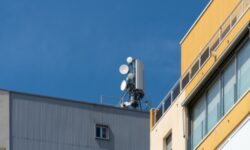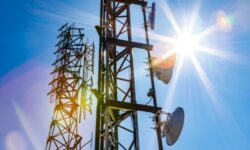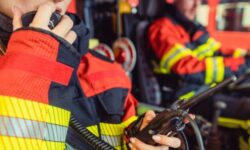Sharpening Your Wiring Skills: Key Points From NFPA 70
Throughout NFPA 72 there is reference to another code that both the designer and installer of fire alarm systems need to understand and follow: NFPA 70, “National Electrical Code.”

The majority of Fire Side Chats over the past few years have been centered on NFPA 72, “The National Fire Alarm and Signaling Code,” and its wealth of technical standards.
I have also stated that if one is going to be in the fire alarm business, an understanding of NFPA 72 is required as well as having copies of the relevant editions for the systems that are being designed, installed, maintained, inspected and tested. But there’s much more to it than that.
Freshen Up on NFPA 70 & Article 760
Within NFPA 72, there are requirements for the wiring of these systems. You can find these requirements within Chapters 11, Circuits and Pathways; 23, Protected Premises Fire Alarm Systems; and 27, Public Emergency Alarm Reporting Systems.
You’ll also note that throughout NFPA 72 there is reference to another code that both the designer and installer of fire alarm systems need to understand and follow: NFPA 70, “National Electrical Code.”
NFPA 70 contains the requirements for the conductors that are to be used for a fire alarm system as well as how those conductors are to be installed. Within NFPA 70 you’ll encounter Article 760, “Fire Alarm Systems.”
This article doesn’t provide you any step-by-step instructions on how to design or install a fire alarm system, but you will find the requirements on how the conductors are to be installed. This includes the securing of conductors, when raceways are required, and separation from other circuits.
In addition, take note that Article 760 limits the use of ground fault circuit interrupters (GFCI) and arc fault circuit interrupters (AFCI) for supply-side circuits that are providing power to a fire alarm system or smoke alarms.
Within NFPA 72, there are more than 30 references to requirements found within NFPA 70. SSI readers who have taken the NICET exams for fire alarm systems, or who are licensed to install systems know that test-takers can expect questions to come from either 70 or 72.
NFPA 70 References Address Wiring
To give you more of a sense where to see this intertwining of codes, the following are a few examples within NFPA 72 of references back to NFPA 70:
10.6.2 Code Conformance. All power supplies shall be installed in accordance with applicable requirements of NFPA 70.
Note that this requires that both the wiring to the supply and load side of the power supply must meet the requirements of 70.
12.2.3 The installation of all pathway wiring, cable, and equipment shall be in accordance with NFPA 70 and the applicable requirements of 12.2.3.1 through 12.2.3.3.
12.2.3.1 Optical fiber cables installed as part of the fire alarm system shall meet the requirements of NFPA 70 Article 770, and be protected against physical damage in accordance with NFPA 70 Article 760.
12.2.3.2 Fire alarm system wiring and equipment, including all circuits controlled and powered by the fire alarm system, shall be installed in accordance with the requirements of this Code and of NFPA 70 Article 760.
12.2.3.3 Wiring methods permitted by other sections of this code to resist attack by fire shall be installed in accordance with manufacturer’s published instructions and the requirements of NFPA 70 Article 760.
This is what I feel is the most important pointer back to NFPA 70 and Article 760.
Circuits, Conductors, Plenums & More
The scope of Article 760 states: “This article covers the installation of wiring and equipment of fire alarm systems, including all circuits controlled and powered by the fire alarm system.”
Within the article are the requirements for both nonpowered and powered limited circuits; circuit integrity cable; the removal of abandoned fire alarm cable; the use of conductors within ducts; plenums and other air-handling spaces; the separation of circuits; and the type of conductors and cables that may be used in various applications. This includes the incorporation of plenum, riser and general use cables.
The separation of cables and conductors within the NEC is not due to the reduction of noise or crosstalk, but rather to prevent any possible temperature rise that may come about due to ampere capacity (or ampacity, as it’s referred to). The NEC is concerned with fire from this or arcing and the prevention of electric shock and electrocution.
Any spacing requirements to prevent signal noise are from the manufacturers’ recommendations and system engineering. I mentioned earlier in this article the restrictions to the use of GFCI and AFCI for the power to fire alarm system controls and smoke alarms. There is debate on both sides of this question, which I will elaborate on in October.
If you enjoyed this article and want to receive more valuable industry content like this, click here to sign up for our FREE digital newsletters!

Security Is Our Business, Too
For professionals who recommend, buy and install all types of electronic security equipment, a free subscription to Commercial Integrator + Security Sales & Integration is like having a consultant on call. You’ll find an ideal balance of technology and business coverage, with installation tips and techniques for products and updates on how to add to your bottom line.
A FREE subscription to the top resource for security and integration industry will prove to be invaluable.














